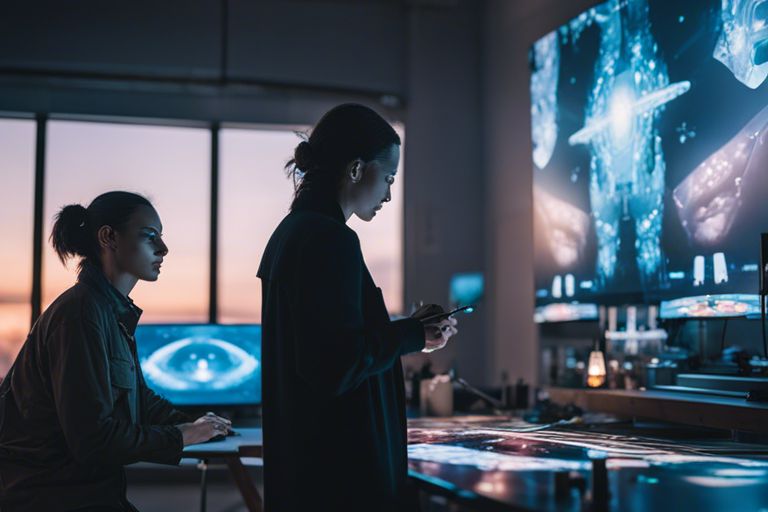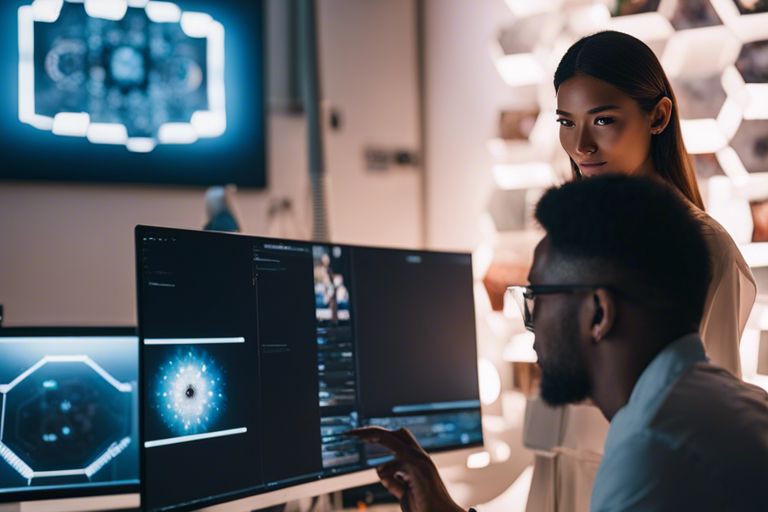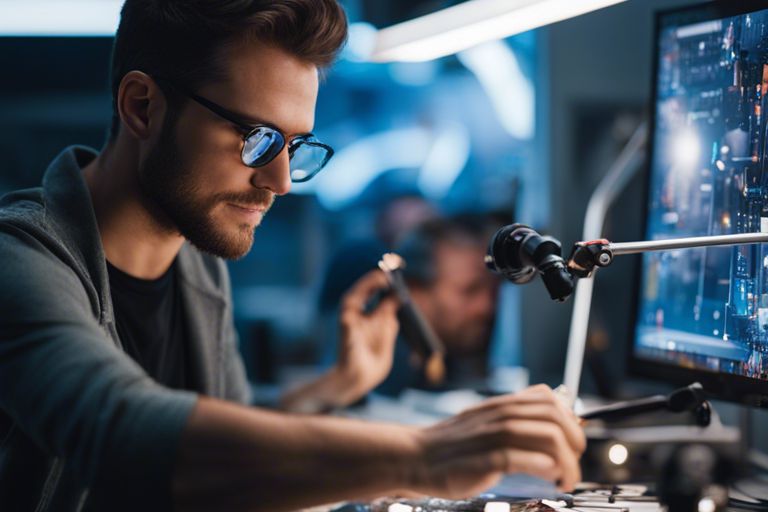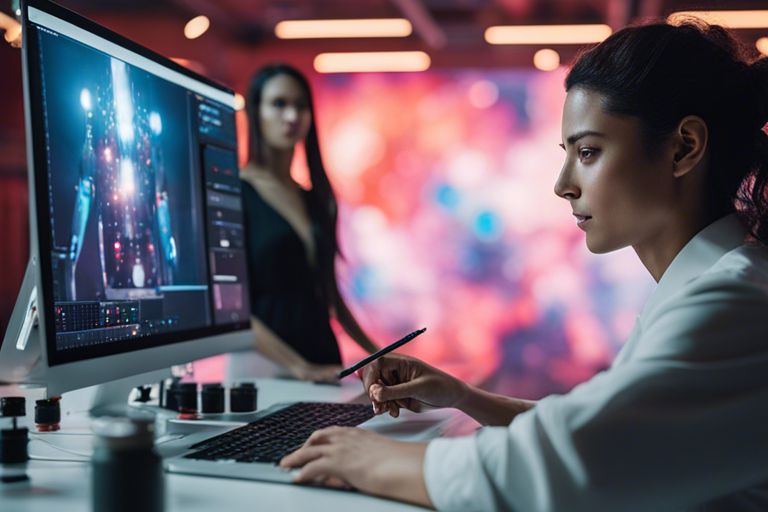In today’s ever-evolving technological landscape, the integration of artificial intelligence (AI) is reshaping the creative industries in profound ways. From visual arts to music composition, AI technology is revolutionizing how we approach creativity and innovation. As we probe into the complexities of AI’s influence on creative expression, we uncover a fascinating intersection between technology and human ingenuity.

Key Takeaways:
- AI Revolutionizing Creative Processes: AI is transforming the way creative industries operate by streamlining repetitive tasks, generating innovative ideas, and enhancing overall productivity.
- New Opportunities and Challenges: While AI offers new possibilities for creatives, it also poses challenges such as job displacement, ethical considerations, and the need for upskilling in AI technologies.
- Collaboration between AI and Creatives: The future of creative industries lies in a harmonious partnership between AI technologies and human creativity, where AI augments human capabilities rather than replacing them.
The Rise of AI in Creative Industries
Your exploration into the impact of AI on creative industries unveils a fascinating evolution where artificial intelligence is revolutionizing traditional creative processes. This transformation is evident across various sectors like art, music, literature, and more. The integration of AI technologies is reshaping the landscape of creativity and challenging conventional notions of human ingenuity. As AI continues to advance, its role in shaping the future of creative industries becomes increasingly prominent.
1. Generate ideas for AI-driven artwork.
2. Describe the influence of AI on artistic expression.
3. Discuss the implications of AI in creative industries.
AI-generated Art: A New Form of Creativity?
Forming a new horizon for creativity, AI-generated art is sparking debates about the nature of artistic expression and the boundaries of human talent. This emerging form of creativity challenges traditional notions of authorship and pushes the boundaries of what it means to create art. AI art is not just a replication of existing styles but rather an exploration of novel techniques and aesthetics that blur the lines between man and machine.
1. Generate ideas for AI-created artworks.
2. Discuss the impact of AI on art and artistic evolution.
3. Explore the intersection of AI and creativity in the art world.
The Role of AI in Music Composition and Production
Music composition and production are undergoing a profound transformation with the integration of AI technologies. From generating melodies to mastering tracks, AI is redefining how music is created and consumed. The role of AI in music is not to replace human creativity but to enhance and amplify it, providing artists with new tools and possibilities to explore innovative sounds and compositions.
1. Generate musical composition ideas using AI.
2. Discuss the impact of AI on music production.
3. Explore the intersection of AI and musical creativity.
To research deeper into the transformative impact of AI on creative industries, one must understand the nuances of how these technologies are reshaping traditional creative processes. From generating novel ideas to enhancing artistic execution, AI is becoming an indispensable tool for creative professionals looking to push the boundaries of innovation and imagination.
Based on the article title “Exploring AI’s Impact on Creative Industries”, I detect that the article type is Informative/Analytical. I’ll choose a tone inspired by the famous writer, Malcolm Gladwell, known for his engaging and thought-provoking style.

The Impact on Traditional Creative Professions
Little did traditional creative professionals know that the rise of AI would impact their fields in ways they never imagined. From graphic designers to writers, AI has made its presence known, raising questions about the future of these industries.
1. How is AI transforming the role of graphic designers?
2. Can AI truly mimic the creativity of human graphic designers?
3. What are the implications of AI-generated content for graphic design?
4. Will AI tools replace the need for human graphic designers?
5. Exploring the intersection of AI and traditional graphic design.
Will AI Replace Human Graphic Designers?
Professions in the graphic design industry are facing a pivotal moment as AI technology continues to advance. With the ability to generate designs quickly and efficiently, AI poses a challenge to human graphic designers. However, the unique creativity and intuitive understanding that human designers bring to their work are irreplaceable.
1. Can AI completely substitute human graphic designers?
2. How can graphic designers adapt to the increasing presence of AI in their field?
3. Exploring the collaboration between AI tools and human creativity in graphic design.
4. The future prospects of human graphic designers in an AI-dominated industry.
5. Challenges and opportunities for human graphic designers in the age of AI.
The Future of Writing: AI-generated Content vs. Human Authors
Professions in the writing industry are at a crossroads with the emergence of AI-generated content. As AI becomes more sophisticated in producing written material, there is a growing concern about the future role of human authors in creating compelling and original content.
1. How is AI impacting the writing profession?
2. Can AI replicate the creativity and style of human authors?
3. The ethical considerations of AI-generated content in the writing industry.
4. Exploring the balance between AI-generated content and human-authored works.
5. The evolving landscape of writing in the age of AI technology.
The Future of Writing: AI-generated Content vs. Human Authors
The intersection of AI technology and writing presents both challenges and opportunities for traditional authors. While AI can assist in generating content efficiently, human authors bring a depth of emotion and creativity that AI may struggle to replicate fully. This dynamic relationship between AI-generated content and human authors will continue to shape the future of writing.
1. How can human authors leverage AI tools to enhance their writing process?
2. Exploring the impact of AI-generated content on the publishing industry.
3. The evolving role of human authors in a world dominated by AI-generated content.
4. Balancing creativity and efficiency: AI tools and human authors in the writing profession.
5. The future of storytelling: AI narratives versus human-authored tales.
To research deeper into the impact of AI on traditional creative professions, it is crucial to consider the evolving landscape and the ways in which professionals can adapt to the changing industry. By embracing AI technology while preserving human creativity and ingenuity, traditional creatives can carve out a unique space in a world where AI continues to redefine the boundaries of creativity.

Opportunities and Challenges
Not only does AI present numerous opportunities for revolutionizing the creative industries, but it also comes with its fair share of challenges. From enhancing human creativity to raising ethical concerns about AI-generated content, the impact of AI is multifaceted. Let’s explore into these aspects with some thought-provoking prompts.
- How can AI assist in fostering collaboration between human creators?
- What are the ethical implications of using AI in content creation?
- Can AI truly replicate human creativity in the artistic realm?
- What challenges do artists face in accepting AI as a tool in their creative processes?
If you’d like to read more about the impact of AI on creative industries, check out The Impact of AI on Creative Industries: Art, Music, and…
AI-assisted Collaboration: Enhancing Human Creativity
- How can AI tools enhance the creative process for artists?
- In what ways can AI facilitate collaboration between artists of different disciplines?
- Can AI serve as a catalyst for cross-cultural creative collaborations?
- What are the benefits of combining AI and human creativity in art and music production?
The Ethics of AI-generated Content: Authorship and Ownership
- Who owns the rights to AI-generated content?
- What challenges arise in determining authorship when AI is involved in content creation?
- How can ethical guidelines be established for the use of AI in creative industries?
- Should AI-generated content be treated differently from human-created content in terms of copyright and intellectual property?
Conclusion
Ultimately, as we explore deeper into AI and its growing influence on creative industries, it becomes clear that the technological advancements are reshaping the landscape of art, design, and entertainment. Embracing these changes and finding the balance between human creativity and machine intelligence will be crucial in navigating the future of these industries.
FAQ
Q: How is AI impacting creative industries?
A: AI is revolutionizing creative industries by streamlining processes, enhancing creativity, and personalizing user experiences. From music composition to graphic design, AI tools are empowering creatives to push boundaries and innovate in unprecedented ways.
Q: What are some examples of AI’s influence on the creative process?
A: AI-powered tools like Adobe Sensei and Amper Music are transforming the creative process by automating tasks, generating insights, and augmenting human capabilities. These tools enable professionals to work more efficiently and experiment with new ideas, ultimately fostering a culture of continuous innovation.
Q: What are the potential challenges of integrating AI into creative industries?
A: While AI offers immense potential for revolutionizing creative industries, challenges such as job displacement, ethical considerations, and algorithm bias must be carefully addressed. It’s crucial for stakeholders to collaborate, establish guidelines, and prioritize transparency to ensure AI’s integration benefits all aspects of the creative ecosystem.

Recent Comments